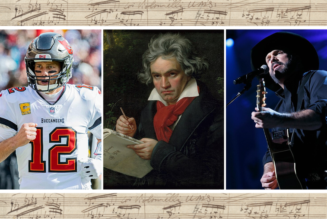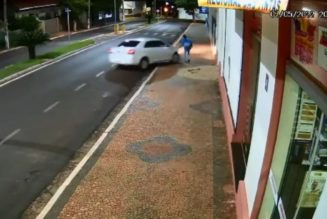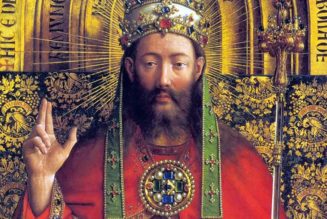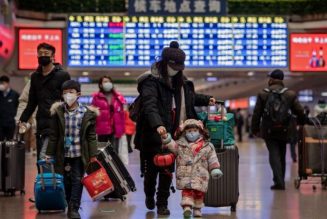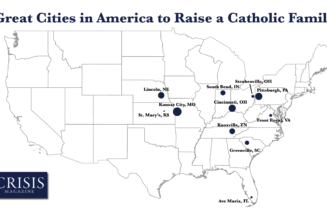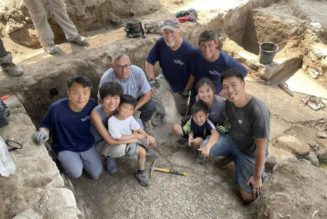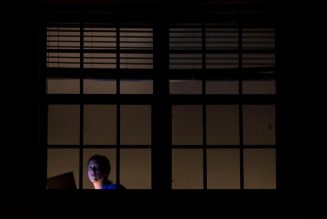
The shattering final shot in Francis Ford Coppola’s The Godfather, while it is among the most celebrated closing shots in cinema history, was not the original ending envisioned by Coppola. Anyone who knows the film well can see the last image in their mind’s eye: a closing door eclipsing the stricken face of Diane Keaton’s Kay, cutting her off from her husband, Al Pacino’s Michael Corleone, whom she now realizes has claimed the mantle of his late father, crime-family patriarch Don Vito Corleone (Marlon Brando).
But Coppola also shot an alternate ending, taken directly from Mario Puzo’s novel and similarly centered on Kay. The unused shot finds Kay in a Catholic church lighting votive candles as she prays for her husband’s soul and for her family. This alternate denouement would have ended the film on an arguably more hopeful note; certainly the effect would have been poignant continuity rather than ruthless rupture.
Puzo envisioned Kay taking her place alongside Michael’s mother, Vito’s widow Carmella (Morgana King), and other mob wives and mothers pleading with heaven on behalf of their corrupt menfolk. This would have been a more Italian and certainly a more Catholic denouement. For Coppola, whose idea of Catholic identity was entangled with hypocrisy and decadence (“to do one thing and think another,” Coppola once told Brian De Palma, “seemed very Catholic to me”), it would have underscored the contradictions at the heart of Sicilian crime-family culture. By implicitly contrasting lived Christian spirituality with mob life, it would also have made a more traditional Hollywood ending.
Jon Lewis, author of Whom God Wishes to Destroy: Francis Coppola and the New Hollywood, considers Coppola’s original ending superior to the ending that wound up in the film, which he says was preferred by Paramount production chief Robert Evans. The original ending, Lewis maintains, “returns us to the film’s thematic conflation of family and religion and Michael’s betrayal of both”; the actual ending “only accounts for Michael’s power and Kay’s growing irrelevance in his life.” (See Lewis’ essay “If History Has Taught Us Anything…” in editor Nick Browne’s Francis Ford Coppola’s The Godfather Trilogy, page 30.)
This is a plausible case for the alternate ending…but it only underscores, for me, the brilliance of the actual ending. The door quietly closing between Kay and Michael—far from representing only an insuperable barrier in their marriage and their once-candid relationship—becomes a potent metaphor resolving multiple themes and ideas established as early as the opening scene and even the opening shot. In the process, the final image offers a damning last word (at least until the sequels) on Michael’s choices and their consequences.
The end in the beginning: family and Family
The Godfather opens and closes in the same darkened room, a home office or study used first by Vito and then by Michael. The muted abruptness of the final shot and the blotting out of Kay’s speechless face contrasts strikingly with the opening shot: a sustained, tight closeup on the face of an aggrieved Italian immigrant pouring out a tale of woe. An undertaker named Bonasera, he has come to petition Don Vito to avenge a brutal attack on his daughter. As Bonasera speaks, the shot pulls back until we are looking over Vito’s shoulder from behind his desk.
Outdoors, an extravagant wedding reception for Vito’s daughter Connie is underway, the conceit being that Sicilian tradition forbids a man to refuse any request on his daughter’s wedding day. During the grand half-hour opening sequence, both Vito and the camera move repeatedly between the shadowy, hushed world of the office and the boisterous outdoor festivities. Vito belongs to both settings, but the delineation between the two realms—inside and outside, shadow and light—is strictly maintained.
“Papa never talked business at the table, in front of the kids,” Connie will later say, meaning Family business. Vito is both a family man and a Family man; to men like him, both are important, but always separate. “It’s business, not personal” is a mantra of the crime-family world, but the personal is essential too. “A man who doesn’t spend time with his family can never be a real man,” Vito says. When Michael eventually takes over the Family business, Vito wants to know if he’s happy with his own family, with Kay and their two children. Michael says he is, but one of The Godfather’s central ideas is that the seemingly successful compartmentalization that has defined the father’s life will elude the son.
The rules of the game
Bonasera’s opening dialogue with Don Vito, and even his monologue in the first shot, provide an elegantly efficient journey from the bright world outside the door into the shadow world within. From the start this is not an Italian story, but an American one: “I believe in America” are the film’s first words. Bonasera could be applying for citizenship. He is a productive member of society, hardworking and law-abiding, and he has been rewarded with success and happiness.
Despite family ties (Vito’s wife Carmella is godmother to Bonasera’s daughter), the undertaker has kept a cautious distance from the Corleones—a choice Vito doesn’t resent, though he points it out. “You were afraid to be in my debt…You found paradise in America, had a good trade, made a good living. The police protected you, and there were courts of law. And you didn’t need a friend like me.” Now, though, the police and the courts have failed Bonasera; the young men who hospitalized his daughter went free, and Bonasera, shamed and dishonored in his helplessness and his inability to avenge the insult to his daughter’s honor, turns to Don Vito for “justice.”
The inner world is criminal, but not lawless. As Bonasera’s clumsy attempts to buy Vito’s services reveal, it is governed by its own codes of honor, etiquette, and conduct. There are lines Vito won’t cross, or at least that he would prefer not to cross. “We’re not murderers,” he scoffs in response to Bonasera’s initial wish for ultimate vengeance. This is at best an equivocation; they are murderers. Vito means perhaps that they are not wanton killers; murder is a serious business, to be employed only when necessary. He is a prudent man, with a healthy sense of how violence begets violence, not to mention press and police pressure.
Don Vito takes offense at Bonasera’s offer of money. The currency of this world is not first of all currency, but “friendship”—or, at least, respect and loyalty, along with favors and debts. What he wants is to be invited over for a cup of coffee; to be called “Godfather”; to be Bonasera’s “friend”: all on the understanding that the day may or may not come when the godfather will call upon Bonasera for a “friendly” service in return.
Significantly, when the day does come, it’s a further delineation of the wall of separation between family and Family. Vito’s son Santino, or Sonny (James Caan), has been brutally murdered in a mob hit leaving his body riddled with machine-gun fire—and Vito can’t bear for his wife Carmella to see how her son ended. The debt Bonasera feared is paid simply by plying his trade to make Sonny’s corpse as presentable as possible to spare Carmella the full horror of her son’s Mafia death.
Catholic on the outside
The title “godfather” here implies, of course, a Catholic milieu. Explaining its importance, Vito’s adopted son, Tom Hagan (Robert Duvall), uses pious language (“a religious, sacred, close relationship”)—yet, significantly, he doesn’t say “to Catholics” or “to Christians,” but “to the Italian people.” As there is family and Family, so the term “godfather” has different meanings on opposite sides of the door. Vito and his family are at least semi-practicing Catholics, but inside the door the significance of the godfather/godchild relationship is purely cultural. The Church as such—like the police and the courts of law—is consigned strictly to the outer world.
This is not to say, of course, that these institutions are beyond corruption. On the contrary, a bent cop, Captain McCluskey (Sterling Hayden), is an important supporting character in The Godfather, and The Godfather Part III (also known in a recut version as The Godfather Coda: The Death of Michael Corleone) is largely preoccupied with corruption in the Church. Rather, what these institutions represent has no significance for or bearing on the shadow world. The Church and the clergy serve a ceremonial role in family life, especially at critical junctures and rites of passage—weddings, funerals, baptisms, first communions, etc.—but the Church has no moral voice that resonates within the shadow world, at least in the first two Godfather films.
This represents a striking break from older mobster movies with a Catholic milieu, like On the Waterfront (1954) and Angels with Dirty Faces (1938). In these films, priests are public voices of social conscience who directly take on organized crime; whether they heed them or not, the mob can’t simply ignore clerical voices. In The Godfather, the Church’s voice is barely a presence to be ignored. (Don Vito does have a passing line about how “most people nowadays” want things “like gambling…liquor—even women”—that are “forbidden to them by the pezzonovante [bigshots] of the Church.”)
Replacing Apollonia
From the start, when we first meet Michael and Kay at the opening wedding sequence, Michael disregards the compartmentalization represented by his father’s office door. Michael explains frankly to Kay about his father’s sometimes brutal business, adding, “That’s my family, Kay, not me.” Michael feels no need for the duality that defines his father’s life because he is on a different trajectory: a college student, a war hero, and, perhaps one day, his father fondly hopes, a bigshot in the outside world, a senator or governor.
When a surprise attempt on his life incapacitates Vito, family ties lead Michael—to the deep regret of Vito and others—to take a hand in Family business. After striking back at Vito’s attackers with a shockingly brazen double murder, Michael flees to Sicily. There he makes a tragically short-lived marriage to a Sicilian country girl named Apollonia (Simonetta Stefanelli), who is killed by a car bomb meant for Michael.
The logic of this haunting episode ultimately leads straight to the closing door in the final shot. Apollonia’s violent death ripples through the rest of the film and beyond partly because she had the makings of a typical mob wife. She would have fulfilled traditional wifely and motherly duties, not asked questions about her husband’s business, and joined Carmella in lighting candles in church. After Apollonia’s death, Michael turns back to Kay, but the candidness of their past relationship is gone. “In five years,” Michael dissembles, “the Corleone family is going to be completely legitimate.”
This is Michael’s bid to recreate with Kay the kind of relationship that he might have had with Apollonia; to compartmentalize with Kay as his father did with Carmella. The alternate ending would have cast Kay as a functional replacement for Apollonia, as Michael wanted, thereby undermining the narrative weight of Michael’s marriage to Apollonia and her death. The Godfather is an American story. Kay is not a Sicilian mob wife. What seemed to work for Vito—who died a peaceful death playing in a sunlit garden with his grandson, and was given a lavish family funeral—will not work for Michael, and one part of the reason is that Kay is not Apollonia.
The wrong side of the door
Perhaps what seemed to work for Vito wasn’t really working as well as it appeared, especially toward the end. Michael’s line to Kay that “my father’s way of doing things is over…even he knows that” may have been a line, but it echoes critical remarks from other mobsters pushing back on Don Vito’s approach to business. “It’s not like the old days,” one says regarding Vito’s opposition to drug trafficking; another tells Michael that his father’s thinking was old-fashioned. Vito miscalculates badly in sending his enforcer Luca Brasi (Lenny Montana) to infiltrate a rival family, and, whether or not he realized the role that Connie’s abusive husband Carlo (Gianni Russo) played in his son Santino’s murder, Vito wouldn’t have had the heart to make his daughter a widow.
From the outset Michael is more ruthless than his father. Vito preferred peaceful solutions to threats and threats to violence; Michael prefers to strike as fast and hard as he can and weather the consequences. More fundamentally, where Vito to the end of his days saw himself as a paterfamilias taking care of his family, Michael—perhaps like the senator or governor he might have been—becomes increasingly motivated only by his own power.
Not only does he make his sister a widow (which was, by the logic of the shadow world, necessary and inevitable), Michael also issues a chilling ultimatum to his older brother Fredo (John Cazale) foreshadowing Fredo’s execution in The Godfather Part II. His relationship with Kay is a sham—or, as Kay flings in his face in Part II, an “abortion”—and when Kay leaves him, Michael’s insistence on keeping custody of the children is a power move. (Tom, not Michael, buys the children presents that are ostensibly from their father. According to Part III, Michael ultimately returns custody of the children to Kay as part of his attempted arc of redemption.)
The Godfather Part II ends with Michael alone, with nothing but his wealth and power, but his trajectory is set by the end of the first film. Unlike Vito, who managed to belong to both worlds, Michael is a Family man, but not a family man—which means, by his father’s maxim, that he is not a “real man.” He does not compartmentalize, because he exists entirely in the shadows. This is the real significance of The Godfather’s final image: not that Kay is barred from the inner world of her husband’s business, but that Michael has barred himself from the world outside. Michael, not Kay, is the one on the wrong side of the door; it’s he who is shut in, not she who is shut out.
Coda: The Irishman and leaving the door open
The Godfather’s final shot is so closely connected to the terrible, masterful climax—the iconic Baptism/massacre sequence intercutting between coordinated assassinations of the heads of the other Families and Michael’s unflinching liturgical responses as godfather to Connie and Carlo’s baby, renouncing Satan and all his works and pomps—that it’s not hard to posit a theological gloss to the closing image of Michael shut in on the wrong side of the door. This case could be bolstered by analysis of The Godfather Part III, in which Michael’s quest for redemption finds him making an uneasy confession to a cardinal he recognizes as a “good man” and “a true priest.” For the last few years, though, the closed door at the end of The Godfather has become inseparable in my mind from the denouement of an unrelated gangster movie: Martin Scorsese’s sprawling 209-minute saga The Irishman, starring Al Pacino as Jimmy Hoffa and Robert De Niro (who played young Vito Corleone in The Godfather Part II) as the film’s protagonist, mob hitman Frank Sheeran.
The Irishman recalls The Godfather trilogy in a few ways. There are family baptisms that for Frank have a mob significance rather than a sacred significance (Frank’s growing importance in the mob is highlighted by the larger number of people in attendance at his second child’s baptism compared to the first). Like Michael, Frank makes decisions that alienate him from his family. The world of the film is the story that Frank tells himself about his life, so we spend the whole movie inside Frank’s head—and the inside of Frank’s head is revealed to be a lonely place. A place that could turn out to be hell.
Toward the end, in a nursing home, Frank makes stumbling attempts to confess to a priest, but he doesn’t feel remorse. Around the same time Frank reflects that, rather than being cremated or buried, he would rather be interred in a crypt. The idea of burial troubles him: “When they go into the ground,” he muses, “it’s so final.” Somehow he feels that interment in a crypt is “not that final.” The same fear of finality haunts the final scene, in which the priest promises to see Frank again after Christmas. “I ain’t going nowhere,” Frank replies. Then, as the priest leaves, Frank asks him not to close the door all the way. “I don’t like that. Leave it open a little.” Perhaps the closed door is too much like the lid of a casket. Frank knows his family will not come to visit him, and he doesn’t know how to invite God in. But he wants to leave the door open.
Michael, in the last shot of The Godfather, wants the door closed. It is a casket lid that he shuts on himself. “The doors of hell,” C.S. Lewis once wrote, “are locked from the inside.” Michael’s story may not end there, but it’s as damning a moment in a man’s life as I can think of in any film.
If you value the news and views Catholic World Report provides, please consider donating to support our efforts. Your contribution will help us continue to make CWR available to all readers worldwide for free, without a subscription. Thank you for your generosity!
Click here for more information on donating to CWR. Click here to sign up for our newsletter.
Join Our Telegram Group : Salvation & Prosperity
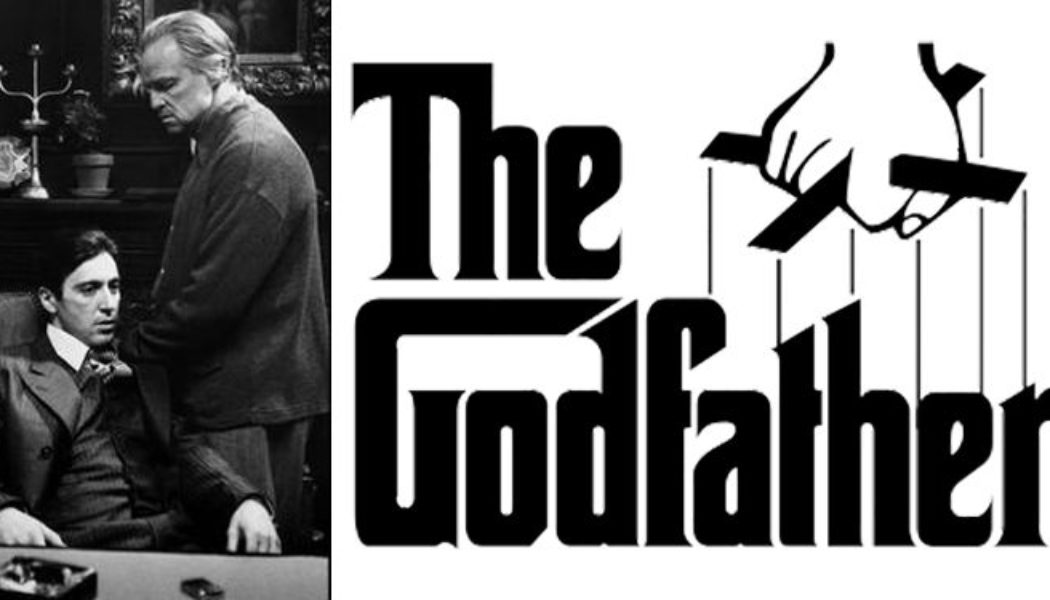
![During Holy Week, rapper Lil Nas X releases line of Satan-themed shoes (containing drop of human blood) to promote gay music video to kids [NYTimes paywall] …](https://salvationprosperity.net/wp-content/uploads/2021/04/during-holy-week-rapper-lil-nas-x-releases-line-of-satan-themed-shoes-containing-drop-of-human-blood-to-promote-gay-music-video-to-kids-nytimes-paywall-327x219.jpg)
